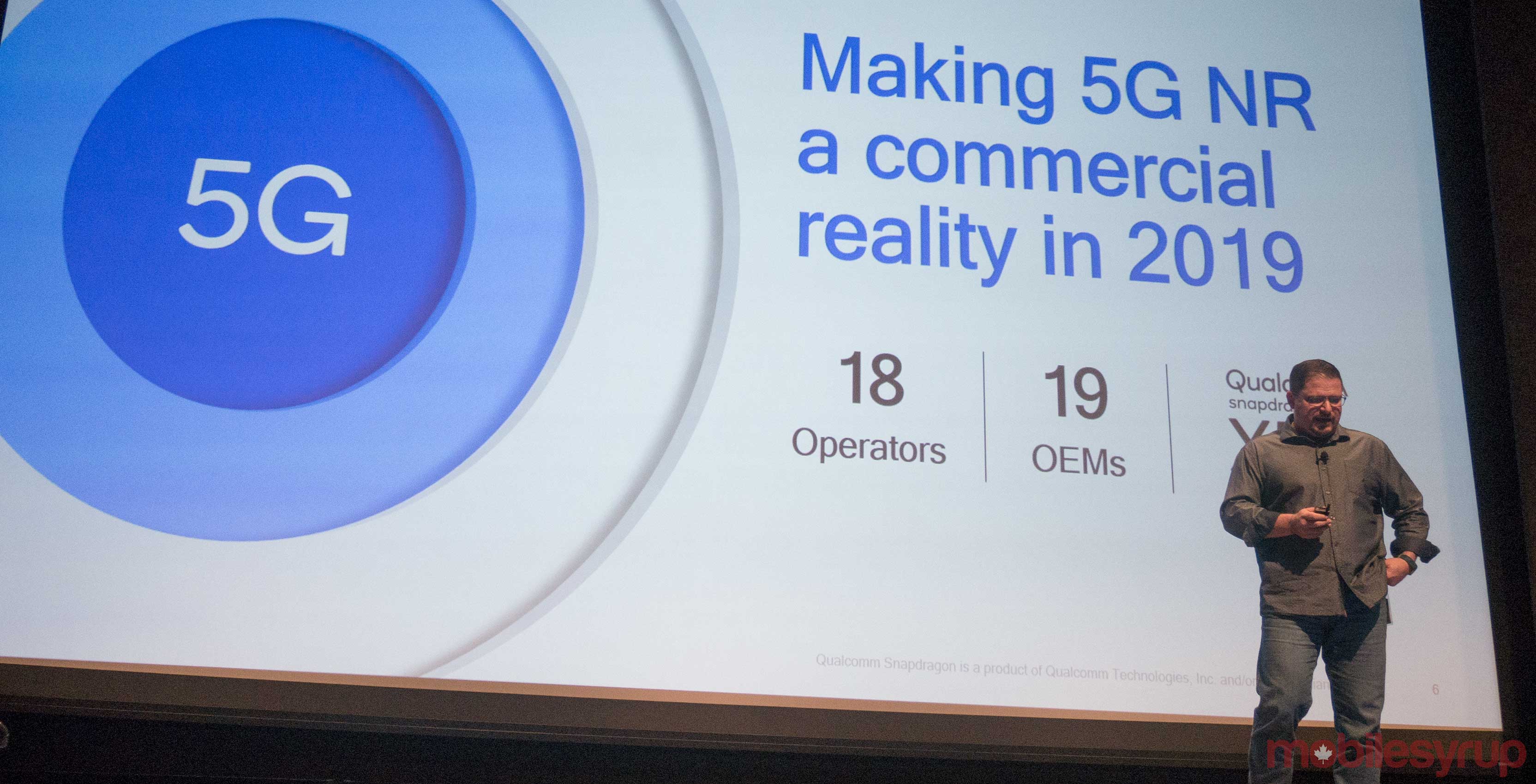
The first specification for non-standalone 5G was set only recently, but Qualcomm is already hard at work on the next phase of its 5G roadmap.
The chipset giant demonstrated several advanced 5G technologies for Release 16, the next step of the 5G New Radio (NR) standard being developed by global wireless standards organization 3GPP, at an event in San Diego on February 7th.
Among the demonstrations was a live look at Qualcomm’s 5G NR spectrum sharing technologies, using the company’s previously announced 5G NR spectrum sharing prototype.
This is something Qualcomm has been promoting for a while, with things like LTE-U/LAA and MulteFire.
The former allows carriers to tap into unlicensed spectrum — meaning spectrum not officially licensed by a wireless operator, such as that used for Bluetooth or Wi-Fi — in order to increase the capacity of their network.
MulteFire, meanwhile, uses unlicensed spectrum in a standalone capacity, without a licensed anchor.
With 5G spectrum sharing, Qualcomm says it expects to boost performance for both licensed and unlicensed spectrum. The chipset manufacturer also notes this 5G spectrum sharing tech will likely play a large role in extending 5G into deployments like private networks for industrial IoT — think communication between factory robots.
The big improvements that allow for enhanced throughput and network capacity come down to tighter coordination between users of the unlicensed and shared spectrum using Spatial Dvision Multiplexing and Coordinated Multi-Point concepts.
Additionally, Qualcomm showed off industrial ethernet over 5G NR, which again facilitates the industrial IoT use case, a large focus for the next phase of 3GPP 5G NR.
The use of industrial ethernet over a wireless network offers up a compelling use case for 5G NR’s sub-millisecond latency, essential for a demanding and fast-paced industrial environment.
Lastly, Qualcomm offered up a vision of how 5G NR augments existing cellular vehicle-to-everything technology (C-V2X), otherwise known as the tech that connects smart vehicles to other connected IoT items via wireless.
The chipset manufacturer stated 5G NR will bring the standard higher throughput and ultra-low latency to connected vehicles.
In its demonstration, the company showed what kind of innovation that could generate; cars could communicate their intentions to other connected vehicles and IoT devices, allowing for advanced path planning for increasingly autonomous vehicles.
These 5G NR demonstrations will be on display at MWC from Feb 26th to March 2nd.
MobileSyrup may earn a commission from purchases made via our links, which helps fund the journalism we provide free on our website. These links do not influence our editorial content. Support us here.


